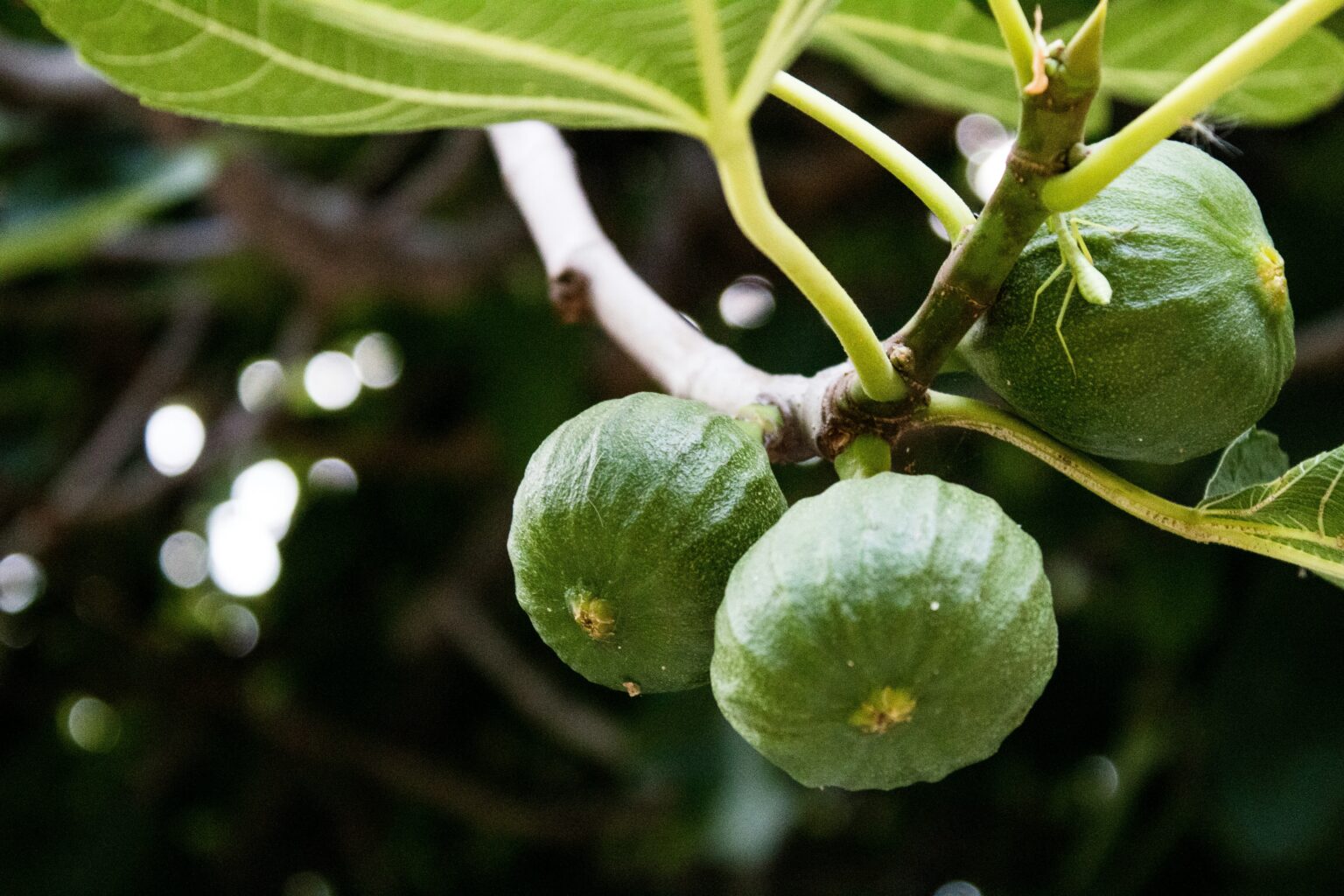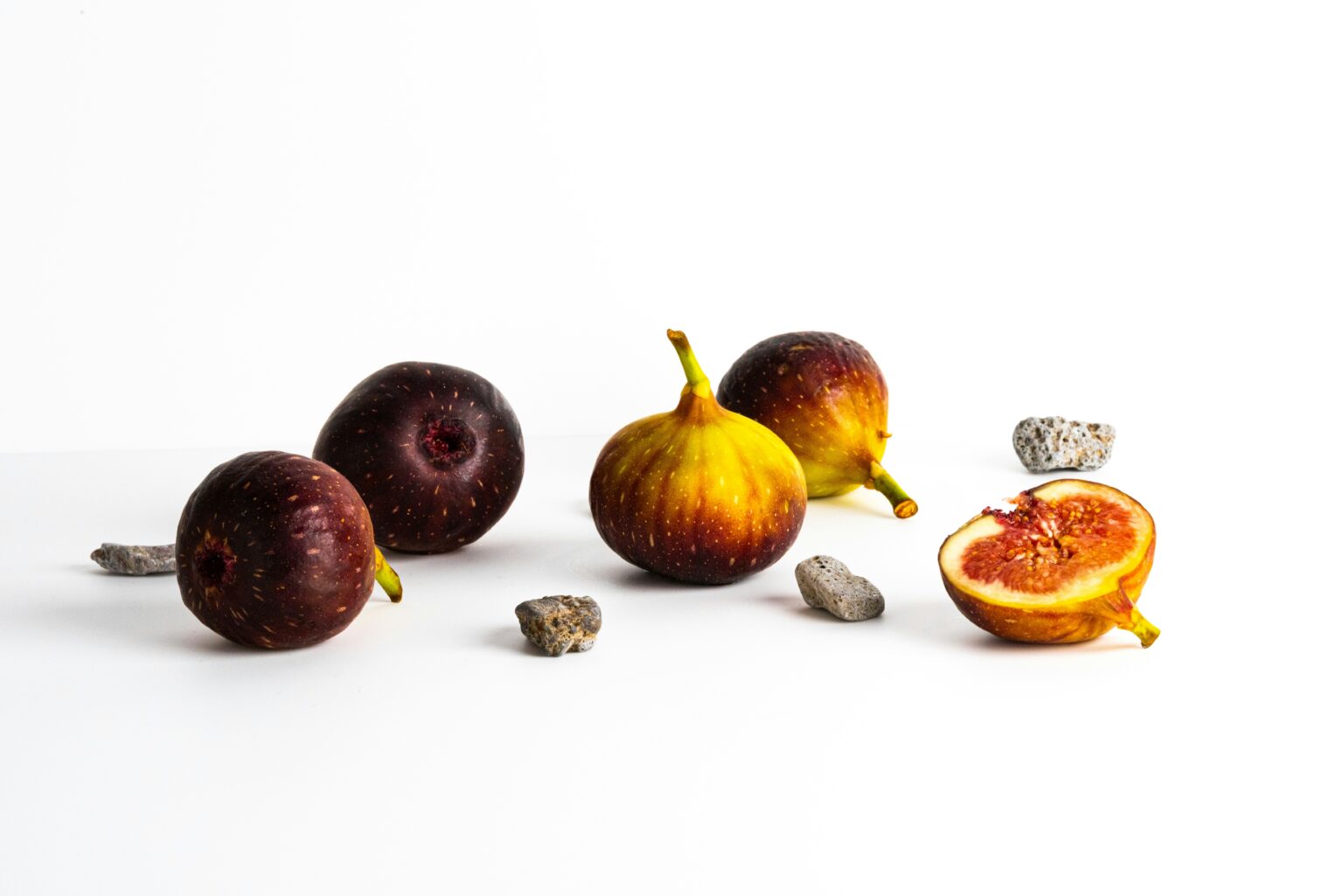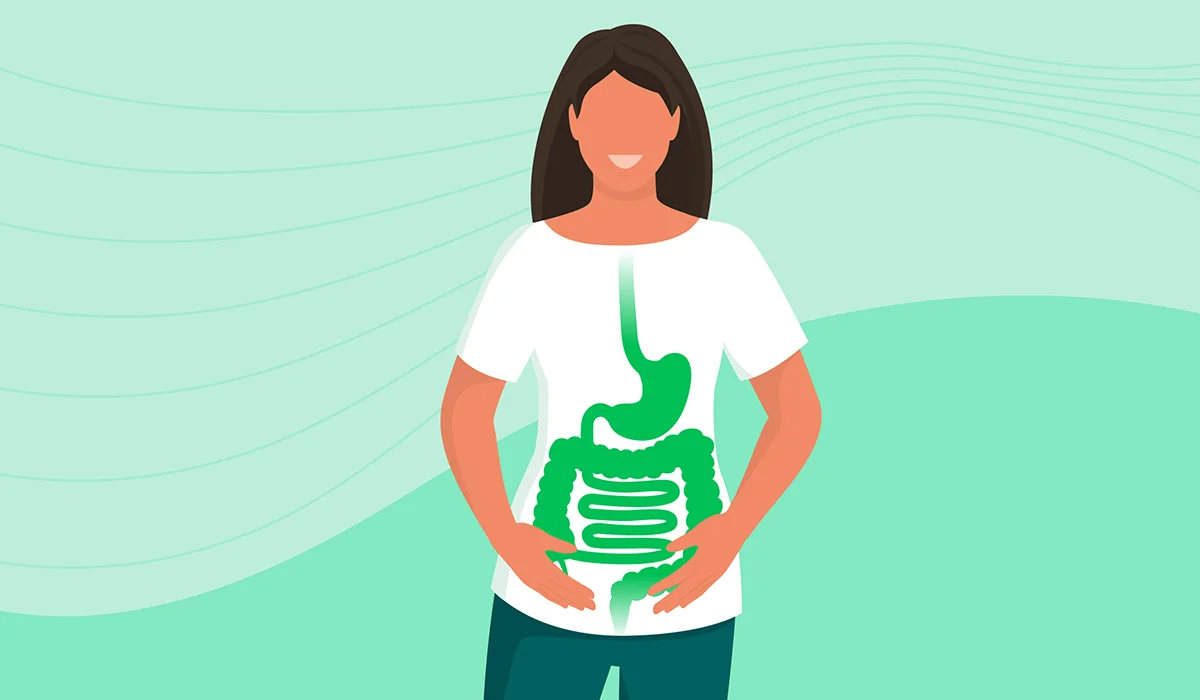What lurks inside the fig is its insides, which are red-fleshed and sweet. Although botanically incorrect, the figs is not a fruit but a fruiting body of a fig tree. It contains hundreds of drupes, otherwise known as fruits.
Nonetheless, the fig fruiting body looks and feels like a fruit designed for culinary uses. Figs can be used in many ways, even eating fresh or drying them out. Apart from that, the leaves of a fig tree can be used for many purposes. Figs are primarily used for the food industry. Fig by-products are used as extract or powder to fortify food products for nutritional enhancement and stability.
Figs are also an excellent source of bioactive and photochemical compounds. This makes these fruiting bodies a nice addition to human diets. Products with a high bioactive compound content make an important contribution to the fight against many diseases. Thus, fig-based food products could benefit people and provide good food. However, eating figs may be banned and linked to mild side effects. Discover these unique fruits and the health advantages they offer.

Health Benefits
Figs are a species that is commonly cultivated in the Moraceae family. Globally, fig production exceeds one million tons. The fruit is high quality and sweet with significant nutritional value. Although the health benefits of fig fruits have been acknowledged for thousands of years, they still seem to be applied as a traditional medicine worldwide. Figs are one of the oldest plants, having a rich history dating back to ancient times, and represent an integral fruit in the Mediterranean diet.
Figs have different health benefits depending on the form of fig (fresh or dried) consumed. Dried figs can also potentially promote health. Data reveal that the intake of selected micronutrients increases by increasing the frequency of figs in the diet, which leads to a higher diet quality.
Digestion Support
This one may be associated with constipation, and figs could serve as a remedy organically. Constipation is one of the most common health issues. However, laxative foods also help treat them like figs and derivatives. Figs work as a laxative and a cleanser. They are laxative because the fiber in figs helps the body eliminate waste rapidly. Dried figs are very high in fiber. Fiber is good for the digestive system.
Moreover, figs are abundant in mucin that attracts waste and fluids in the intestines and excretes them. So, it is worth a shot to use figs for constipation. Furthermore, fig consumption might also benefit other digestive disturbances (inflammatory bowel disease) illnesses. Nevertheless, we suggest that you should consult your physician about this part of the diet to begin with.

Cardiovascular Support
Figs also help combat heart diseases, such as coronary artery disease. Most experts note that efficient nutrition is the key preventable variable to avoid this category of problems. Hence, including healthful foods such as figs in the diet is a beneficial preventive step. Due to the precious compounds of figs, they can protect against the cardiovascular system. A person may regulate triglyceride levels, which is beneficial to keeping the heart healthy. Plus, antioxidants found in figs help remove coronary artery-clogging free radicals from the body and may promote cardiovascular disease.
Diabetes Control
Over the last few years, plant-based medicines for the treatment of diabetes seem to have gained attention due to their wide availability, low cost, and absence of adverse side effects. Besides all these features and properties, figs have also been studied, which may show a defensive effect against diabetes. Some of the compounds found in figs are very effective against diabetes because they control blood glucose levels. Key hypoglycemic effects of fig species are improving insulin sensitivity, lowering carbohydrate absorption, and augmenting antioxidant status.
Fig species are known as promising anti-diabetic agents according to other studies. So, it is the fruit of many health possibilities for patients with diabetes. However, it is worth adding that dried figs, which provide a lot of sugar, may not be suitable for people with diabetes.
Respiratory Support
Consuming figs is also beneficial for the respiratory organs. There are some which even suggest using figs for the treatment of asthma and coughs. The nutritional features of figs help release phlegm stuck inside the respiratory tract and can assist with respiration problems. Figs can also help you with a sore throat. This is the reason that figs are effective for cold symptom relief. Figs also possess anti-inflammatory and antipyretic activity, making them a better fruit.

Brain Support
Fig is a medicinal plant containing several medicinal ingredients that may have the potential to support cognitive function. The presence of minerals and vitamins can reduce or eliminate all stress. Moreover, it can be utilized to combat abnormal tiredness. The high density of carbohydrates, especially in dried fruits, gives us a small supply of energy needed for the brain to work. The brain will process information more quickly and better because it contains many natural sugars.
Hepaprotective Effects
Fig is a fruit that also serves as an organ net for the liver. Recently, hepatoprotective effects of fig extract have been reported. Hence, scientific evidence shows that figs can protect the liver. The liver functions due to the fruit; thus, it can limit the occurrence of different liver ailments. And probably not without reason, a well-supported dietary paradigm for non-alcoholic steatohepatitis is running after the Mediterranean diet abundant in figs and many other fruits.
Anticancer Activity
The other benefit of figs is that they can prevent cancer. Figs can be good at preventing some of the most deadly diseases because of their bioactive compounds. Figs are highly nutritious. Figs contain certain substances that can prevent the growth of various cancer cells. So, if you consume figs regularly, you may help prevent cancer. Fig may block colon cancer, among other things. Since the fiber-rich figs speed up the elimination of stools, they prevent colon cancer. Thus, the effects of fruit on digestive health are quite protective and beneficial.
Anti-Inflammatory Effect
Fig also has protective effects against harmful pathogens. It is packed full of natural antioxidants that can reduce inflammation in the human body. Antioxidants protect eye cells against oxidative damage that can initiate or further the development of many diseases. The health benefits of figs are especially therapeutic properties, such as treatments for skin diseases, scabies, and gonorrhea, based on scientific data. Fig extract can reduce skin inflammation due to its anti-inflammatory effects. The fig tree also contains elements for healthy skin, such as vitamins and minerals.

Nutrition Content
Figs are a special fruit whose phytochemical and nutritional compositions vary according to the environment, species, harvesting season, and maturity. Figs are typically regarded as a dense source of different micronutrients and macronutrients. Fresh figs also contain a few calories, an added benefit for dieters with a caloric deficit. Caution, though — dried figs are more caloric and have more sugars. Discover the key constituents found in the fruit of the fig tree.
Carbohydrates
Let’s check the essential nutrients of figs – their flesh is mostly made up of carbohydrates. Carbohydrates are also sugars. Sugars are high in dried fruits compared to fresh figs. Several free sugars, such as glucose, fructose, and sucrose, are noted. Fruits and vegetables contain different types of carbohydrates that serve as crucial dietary building blocks, giving cells the fuel for energy to perform their functions. Carbohydrates only threaten health if they are in excess; otherwise, the human body needs them.
Protein
Another essential thing your body needs is protein, which figs can also provide. Protein from food is needed to form new body proteins and construct and reconstruct worn-out tissues. It is also an important part of blood, lymph, and many other bodily fluids, such as enzymes and hormones.
Fiber
Dietary fiber is abundant in both fresh and dried figs. A small amount of figs has the most of the daily dietary fiber requirement. When it comes to having a healthy diet, there must be some amount of dietary fiber in the form of its key element, which aids in maintaining the proper function of the digestive system.

Fatty Acids
Figs have a very low fat value but will give us more optional fatty acids. Several fatty acids have been identified in different types of figs, most predominantly linolenic. Linolenic acid belongs to Omega-3 fatty acids, is known to be cardioprotective, and has proven effects against the development of certain cancers and several chronic diseases, among others.
Vitamins
Vitamins are a type of dietary micronutrient that formulates human structural and metabolic processes. Whether fresh or dry, figs are rich in vitamins. First, figs contain vitamin C, among the vitamins they contain. The levels of vitamin C in figs are comparable to those found in grapes and apricots but lower than those found in fresh peaches and plums. The natural antioxidant found in figs is vitamin C, a water-soluble vitamin.
Moreover, fresh figs may be an excellent source of vitamin A, which serves numerous health functions. Besides, eating figs will give you vitamin K, too. Therefore, the figs belong to various healthy and long-lived fruit groups.
Minerals
Besides vitamins, fig is also a mineral booster. Beyond the delicious taste, figs contain more minerals than any other popular fruit. These unique fruit gifts are a popular potassium, calcium, sodium, magnesium, and phosphorus source. Figs contain it in larger quantities — together with these minerals. Therefore, all these minerals are important to be compensated by eating figs. We will also find smaller quantities of iron, zinc, and many more. This means that figs are worth eating in all forms (even after drying, this fruit still retains useful minerals).
Antioxidants
Figs contain bioactive compounds that are beneficial in preventing diseases. These include components that act as antioxidants. These compounds are great at preventing the production of reactive oxygen species. Bioactive chemicals like polyphenols and flavonoids are found in fig extract. Higher levels of phytochemicals were observed in extracts from the figs of darker-colored than from lighter-colored varieties. Its skin has the highest total polyphenol content and antioxidant activity per unit weight compared to the flesh of the fruit. So, the fruit with skin is worth consuming—bearing in mind that while it is rather tough, it is edible and harmless. Dried fruit from fig trees also contains high antioxidant capacity. Polyphenols also act as anticancer, anti-inflammatory, and antibacterial agents.

Side Effects
Figs are a relatively safe fruit, irrespective of administration form. Figs are highly nutritious and can be added to children’s diets. Nevertheless, eating figs — particularly in substantial amounts — has adverse event potential. Also, figs are a no-no for a particular group of people. So, remember that any product, even a healthy one, can have negative effects. So, if you have long-term conditions, it makes sense to carefully check the diet you follow with your doctor because this can influence recovery. Also, they should be cleaned well before consumption to prevent other adverse effects.
Diarrhea
Figs are fiber-rich, a key contributor to the diet that guards against constipation. However, too much fiber consumed can cause diarrhea accompanied by stomach pain. Thus, the high fiber content also contraindicates the product in case of diarrhea and stomach problems.
Allergic Reaction
Figs are not one of the fruits known to produce common food allergens. That said, someone could have an allergic reaction after consuming a fig. Symptoms of skin or respiratory issues follow this. Individuals with recognized allergies should take caution when adding figs to their diets. It can also manifest as difficulty breathing, requiring immediate medical attention.
Migraine
But because figs are a common migraine trigger, people with frequent migraines should skip this food. Several studies show that some triggers can bring on a migraine headache in those who are susceptible. Some of the migraine patients have reported certain foods as a triggering factor for their migraine attacks. In addition to apricots and prunes, the other dried fruits on the list of food triggers were dried figs.
Sources
- Izza Faiz ul Rasool, Afifa Aziz, Waseem Khalid, Hyrije Koraqi, Shahida Anusha Siddiqui, Ammar AL-Farga, Wing-Fu Lai, Anwar Ali (2023). Industrial Application and Health Prospective of Fig (Ficus carica) By-Products.
https://pmc.ncbi.nlm.nih.gov/articles/PMC9919570/ - Amandeep K. Sandhu, Maria Islam, Indika Edirisinghe, Britt Burton-Freeman (2023). Phytochemical Composition and Health Benefits of Figs (Fresh and Dried): A Review of Literature from 2000 to 2022. https://pubmed.ncbi.nlm.nih.gov/37299587/
- Merve Ceren Akgor, Doga Vuralli, Damla Hazal Sucu, Saliha Gokce, Bahar Tasdelen, Fatih Gultekin, Hayrunnisa Bolay (2023). Distinct Food Triggers for Migraine, Medication Overuse Headache and Irritable Bowel Syndrome.
https://pmc.ncbi.nlm.nih.gov/articles/PMC10607881/#sec1-jcm-12-06488















